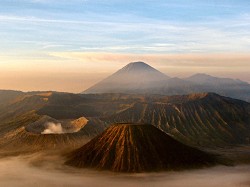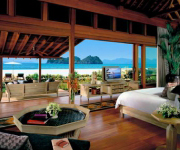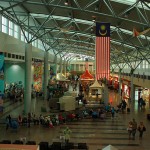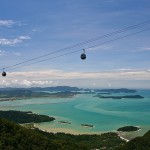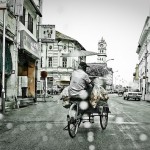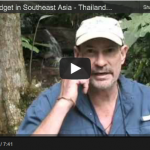Southeast Asia is world-renowned for its eye-popping natural wonders, exotic local cultures, delicious street foods, laidback lifestyle and almost endless summers, all for a fraction of cost anywhere else in the world.
Malaysia: One Size Fits All?
As a region, Southeast Asia has it all. But individually, countries still have a lot of growing pains to do to achieve maturity in tourist infrastructure, healthcare and communications. Laos, for example, is supremely affordable, but healthcare is very basic and even close to non-existent especially in the villages. Singapore’s tourist infrastructure is peerless in Southeast Asia, but because of its diminutive size, it does not have enough beach clout to tantalize sun worshipers from all frigid corners of the globe. The Philippines is sufficiently adept with the English language, but foreign travelers observe that their dollars could actually go farther if they spend it somewhere else.
So where in Southeast Asia can one get the comforts of Westernized living while still within arm’s reach of nature; dining out five times a week and enjoying happy hour as often without busting one’s bank account? Where in this corner of Asian landmass could one get health care comparable to, but cheaper than, Singapore; street food as tasty as that of Thailand; cost of living not much higher than Cambodia or Laos; supportive network of expats like that of Thailand; and English language proficiency for easier integration like that of the Philippines?
Malaysia does not easily come to mind, but according to InternationalLiving.com, Malaysia – at least in this part of the world – is it.
Malaysia Named Top 3 Retirement Haven
Malaysia has recently been named as the online magazine’s Top 3 retirement haven, bested only by Ecuador and Panama in first and second spot, respectively. Using their Annual Global Retirement Index, InternationalLiving.com scored Malaysia high in amenities and entertainment options, healthcare, cost of living and cultural integration. For US$1,700, expatriates can easily maintain seaside and mountain-top vacation homes, shuttle back and forth between the two, hire domestic help, dine out five times a week, purchase sufficient medical coverage, and own transport on both land and water. In short, expatriates can live well on far less than the same amount if they were to live in North America or Europe.
Langkawi (Photo by Jakub Michankow)

Sipadan Island (Photo by Irwandy Mazwir)
Malaysia is Most Charming Asian Island Destination in 2013
It also doesn’t hurt that Malaysia has also been voted as the Most Charming Asian Island Destination for 2013 by New Voyage Magazine. The publication cited the country’s pristine beaches, lush jungles, well-preserved wildlife on land and in water, among many desirable qualities.
Langkawi, in particular, deserves special mention, as it is the country’s beach mecca for luxury vacation. It also plays host to majestic natural formations and untouched vegetation inscribed as World Geopark by UNESCO in 2007. There is also George Town in Penang, another UNESCO World Heritage Site for its colonial architecture and cuisine among others. Sipadan Island off the east coast of Sabah is diving hotspot, along with countless others on this side of Oceania.
If that accolade is not enough to secure the status of Malaysia as a truly charming destination, then it would to note that the United Nations’ World Trade Organization has consistently included Malaysia in its Top 10 Tourism Highlights List since 2009. For the last three years, Malaysia has earned the 9th spot in this venerable list of destinations that attract at least 20 million tourists a year, to say nothing of billions of dollars in tourism revenue.
Malaysia is “Halal” Destination for Muslim Travelers
As an interfaith destination, Malaysia is the friendliest to Muslim travelers compared to 50 other countries reviewed for their “halal” tour packages. (Because Muslims strictly adhere to their faith, they are forbidden to partake in certain activities or consume certain foods that are considered “unclean.”) Culturally, this means a more varied experience for expatriates who may be wary of traveling to other Muslim-dominant countries for fear of perceived prejudice towards Western travelers.
With all these desirable attributes coming together in one neat package, who could say that Malaysia is only for people over 50? Apparently, Malaysia has loads more to offer, whether for children aged 5, or old people aged 95.
Explore the rest of the world
More from my site
Article by Chris
Chris had a passion to contribute to society especially to fellow travelers like himself. He also had a passion for Southeast Asia and frequently visited. While brainstorming ideas, he decided that a travel blog dedicated to his favorite countries, Thailand and Singapore, could be more beneficial than any guidebook. Only one year later did the blog’s success bring in more writers, more countries, and more readers.
- Google+ |
- More Posts (331)
Help others get the information they need by liking or sharing our page!
Follow @followloveblab